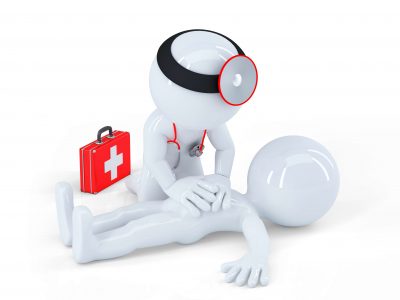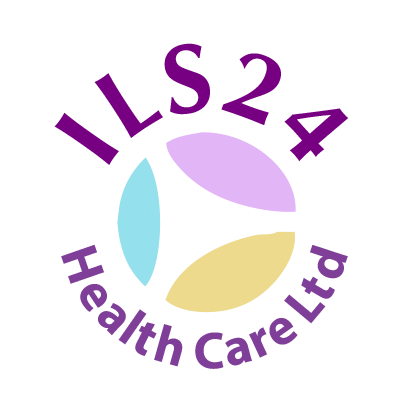Mandatory Training

Role of the Domiciliary Care Worker in Maintaining a Culture which Safeguards the Individual, Legislation and Policy, Concept and Definition of Abuse Signs and Symptoms of Abusive Behaviour Responding to Abuse
The Law, Risk Assessment and the Care Plan, Slips, Trips and Falls, Moving and Handling, COSHH, Infection Control, Equipment and Electrical Safety, Fire Safety, Injury and Disease, Personal Safety
Assess the Situation, Assess the Casualty, Cardiopulmonary Resuscitation (CPR), Recovery Position, Calling the Ambulance, Heart Attack, Stroke, Severe External Bleeding, Shock, Choking, Broken and Fractured Bones, Back Injury, Burns, Diabetes, Eye Injury, Allergic Reactions, Swallowed Poisons, The First Aid Box, Records
Basic Life Support Introduction, Optional basic Life support practical or video link evaluation, Fears of First Aid, Asking Permission to Help, Scene Safety, Chain of Survival, DRAB and the ABCD’s, Initial Assessment, Stop Think Act, Differences in Child Size, Barriers, Face Shields, Hand washing and hand gels, Adult Bag Valve Mask, Cardiac Arrest, Heart Attack, Heart Attack Position, Aspirin and the Aspod, Adult CPR, Adult, Child, Infant CPR, Adult CPR Hand Over, Compression-Only CPR, AED Introduction , Child CPR Breakdown, Infant CPR, Drowning, Choking, Adult Choking, Child Choking, Infant Choking
The Importance of Back Care, What the Law Says about Moving and Handling, The Causes of Back Pain, Efficient Moving Principles, Lying to Sitting, Sitting to Standing to Seated, Moving and Handling Equipment, Dealing with a Fall and Dangerous Techniques
Safe handling access, Commands and instructions ,Team handling , Eye contact, Bed heights, Using body weight and balance (ergonomic handling), Turning someone in bed (various methods), Sitting someone up in bed (various methods), Profile beds, Moving up the bed (various methods), Using slide sheets, Sitting to the edge of a bed, Preparing people to stand, Standing up (various methods), Correct sitting position, Sitting down (various methods), Slide boards, Sitting to sitting transfers,”Clever” techniques and tips!, Wheelchair moves, Wheelchair safety, Wheelchairs and vehicles, Walking, Walking sticks and frames, Falling, Assisted falls, Helping people up from the floor, Repositioning people in chairs, Hoists and slings, Fitting slings, Hoist lifts, Hoist transfers, Hoist myths and misunderstandings addressed, 9 dangerous techniques analysed, Dangerous methods v. safe techniques & Handling aids.
How the Mental Capacity Act Affects our Day-today Work, The 5 Metal Capacity Act Principles , Principle 1 – Presuming Capacity, Principle 2 – Supporting People to Make their Own Choices, Principle 3 -An Unwise Decision is Still A Decision, Principle 4 – How do we Act in Someone’s Best Interest, Principle 5 – Choosing the Least Restrictive Option, Deprivation of Liberty Safeguards—DOLS, Making Capacity Assessments, Putting it All Together, The Broader Legal Context and Conclusion
Importance of good food hygiene, Legal duties, Food policy, Poor food hygiene, Good food hygiene, At risk groups, Food hazards, Bacteria, Pathogenic bacteria, How bacteria multiply, The Danger Zone, Types of contamination, How to prevent bacteria multiplying, Keeping out of the Danger Zone, Food deliveries, Food storage, Food preparation, Food cooking, Temperature probes, Food cooling, Food holding, Food re-heating, Food serving, Personal hygiene, Hand washing, Tackling pests, Food premises, Food equipment, Food boards, Cleaning, Disinfecting & Managing waste
Legislation, Policies and Procedures, Classification of Medication, Types of Medication, Working with other Professionals, Maintaining Medication Records, Collection, Storage & Disposal , Principles of Safe Medication Handling, Supporting Self Administration, Administering Medication, Reporting Mistakes, Recognising & Reporting Changes to the individual
Causes of Infection, Agreed ways of working and responsibilities, How infections are spread, Personal protective equipment (PPE), Cleaning, preventing exposures to blood and body fluids, Laundry, Personal Hygiene, Safe handling of off, Waste disposal, Managing heath and reporting infections
Causes of infection • Your role in infection control • Protective equipment • Handling used linen • Who is at risk of infection • Hand hygiene • Occupational health • Waste management
Fire Triangle, Heat Sources, Prevention, Smoking, Kitchens, Safety Awareness, Fire Extinguishers, Emergency Situations
Describe their main duties and responsibilities, List the standards and codes of conduct and practice that relate to their role, Demonstrate that they are working in accordance with the agreed ways of working with their employer, Explain how their previous experiences, attitudes and beliefs may affect the way they work


Other Courses
Attitudes, Reactions, Expected Death, Sudden Death, & the Body Funerals, Bereavement Support, Preparing for Death, Announcing the Death & Practical Things.
The Person Centred Theory of Dementia, Person Centred Skills, Understanding People with Dementia, Effective Communication Skills, Engaging People with, Dementia in Activities & Keeping People Safe
Health responsibilities in the workplace, Safe storage, Safe disposal, Employer’s duties, Employer’s duties, Employee’s duties, Risk assessment, The assessment process, What if something does go wrong?, Hazard warning labels, Data sheets (safety data sheets), Chemicals Diluting and decanting, Using chemicals safely, Substances are more than just chemicals, Waste – regular, Waste – clinical, Micro-organisms, Infection control, Communicable diseases, Fumes, Dust, Respiratory hazards& Medication
What is care planning?, Assessing needs vs. care planning, SMART objectives, 5 principles of care planning, Developing care plans, Features of a good care plan, People involved, Confidentiality, Needs, wishes & preferences, Risks vs. rights, Basic needs, Status needs, Self fulfilment needs, Principles of care, Person centred care, Promoting independence, Resources, Decision making & Pre-service assessments, Observation, Inter-agency working, Critical pathway, Care plan reviews, Communication, Record keeping, Key workers, Continuity of care, Accessing care plans, Data protection, Promoting best interests
What is catheterisation?, The purpose of urinary catheterisation, Causes and types of incontinence, Risks involved with catheterisation, Types of catheters, Inserting a catheter
Definitions and methods of catheterisation, Indications for catheterisation, Contra-indications for catheterisation, Advantages and disadvantages of urinary catheters, Male/Female anatomy, Male urethral Catheterisation procedure – theory (clinical courses involves practical demonstration), Female urethral catheterisation procedure – theory (clinical courses involves practical demonstration), Record keeping
Understand your role, Your personal development, Duty of care, Equality and diversity, Work in a person centred way, Communication, Privacy and dignity, Fluids and nutrition, Awareness of mental health, dementia and learning disabilities, Safeguarding adults, Safeguarding children, Basic life support, Health and safety, Handling information, Infection prevention and control
Anatomy & physiology, Reasons for assisted cough, Identifying health issues, Complications of cough assist, To understand the correct procedure for assisted cough, Troubleshooting and complications, Practical session
Attitudes, Reactions, Expected Death, Sudden Death, & the Body Funerals, Bereavement Support, Preparing for Death, Announcing the Death & Practical Things.
The purpose of PEG feeding, Conditions which may require a PEG, Indications and contra indications of PEG, The procedures for feeding and administering medications via PEG, Recognising, dealing with and reporting complications, The care and maintenance of enteral feeding tubes, Procedures for effective mouth care, Documentation and record keeping, Practical session, Competency framework & training record sign off (on 6 hour version only)
Applied anatomy and physiology, Infection control and prevention, Different types of tracheostomy, Indications for tracheostomy, Complications of tracheostomy, Changing dressings and keeping the area clean, Fitting, managing and changing an inner cannula tube, Suctioning a patient with a tracheostomy, Communication and care of a patient with a tracheostomy tube, Keeping accurate records, Full tube change procedure, Emergency tracheostomy management (resus) procedure and guidelines, Practical session using mannequin & suction machine
Definition of ventilation, Anatomy & physiology, Reasons for ventilation, Different types of ventilation, Non invasive ventilation, Complication of ventilation and troubleshooting, Documentation
Applied anatomy and physiology, Infection control and prevention, Indications for a stoma, Complications of a stoma, Fitting, emptying and removing, Privacy, dignity & respect, Practical session Keeping accurate records
Discuss past and present attitudes/experience around palliative care, Holistic palliative care, Discuss considerations and difficult conversations, Accountability, Advantages and disadvantages of using syringe driver, Equipment required, Documentation and Labelling syringes, Monitoring patient checks, Commonly used drugs, Syringes, Sites to use and avoid, Use of drugs beyond licence, Commonly used drugs, Troubleshooting, Give a practical demonstration of how to set up a syringe pump, Practical session T34 syringe
To heighten awareness regarding the health and safety issues associated with lone working, To identify the responsibilities of both lone workers and employers,
To promote safe practices for lone working
The trainee is trained to oversee the activities and responsibilities of employees he/she manages. It is an important job function for managers/supervisors at all levels throughout your company. Coaching, training and employee development are among the common responsibilities assumed by a supervisor
Possible risks of suctioning, Procedure – plus brief infection control talk, Who might require suction, Why suction, When to suction – noticing changes in residents, Where to suction – sites and equipment, What is suction?, Practical session
